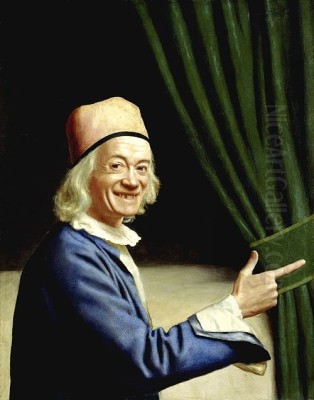
Jean-Étienne Liotard stands as one of the most intriguing and distinctive figures in eighteenth-century European art. A Swiss artist born in Geneva, he navigated the courts and cultural capitals of Europe with remarkable ease, leaving behind a legacy of exquisitely rendered portraits, particularly in the demanding medium of pastel. His life was as colourful as his artworks, marked by extensive travel, a unique personal style influenced by his time in the Ottoman Empire, and an unwavering commitment to realism that set him apart from many of his contemporaries. This exploration delves into the life, work, and enduring significance of an artist who captured the likenesses of emperors and merchants with equal precision and insight.
Genevan Roots and Parisian Training
Jean-Étienne Liotard was born in Geneva on December 22, 1702. His parents, Antoine and Anne Liotard, were French Huguenots who had sought refuge in Switzerland following the Revocation of the Edict of Nantes in 1685. This heritage perhaps instilled in Liotard a certain independence and adaptability that would characterize his peripatetic career. His father was a jeweller, suggesting an early exposure to craftsmanship and fine detail. Showing artistic promise, the young Liotard was initially trained in miniature painting and engraving in Geneva under professors Daniel Gardelle and Louis Gardelle, before seeking more advanced instruction in Paris around 1723.
In the vibrant artistic milieu of Paris, Liotard studied under Jean-Baptiste Massé, a respected miniaturist and engraver who also worked in pastel. He also spent time in the studio of François Lemoyne, a leading history painter of the era, shortly before Lemoyne's tragic suicide in 1737. Though Liotard would ultimately specialize in portraiture rather than grand historical narratives like Lemoyne, the exposure to the highest levels of Parisian academic training honed his draughtsmanship. During this formative period, he also undoubtedly absorbed the prevailing Rococo aesthetic, exemplified by artists like Jean-Antoine Watteau, whose delicate depictions of fêtes galantes were highly influential, though Liotard would later forge his own path towards greater realism.
The Grand Tour and the Call of the East
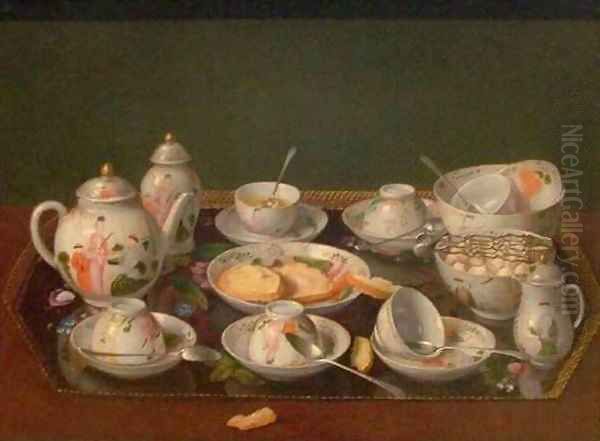
Like many aspiring artists of his time, Liotard embarked on a version of the Grand Tour, travelling to Italy in 1735. He spent time in Rome and Naples, studying classical antiquities and the works of the Italian masters. In Rome, he painted portraits of Pope Clement XII and several cardinals. It was here, in 1736, that a fateful encounter occurred. He met Sir William Ponsonby, later the 2nd Earl of Bessborough, and John Montagu, the 4th Earl of Sandwich (often mistakenly identified solely by his courtesy title Lord Duncannon at the time). These well-connected British aristocrats were impressed by Liotard's talent.
Lord Sandwich invited Liotard to accompany him on a journey to Constantinople (modern-day Istanbul), the capital of the Ottoman Empire. They set sail from Naples, stopping at Malta, Greek islands, and Smyrna before arriving in Constantinople in 1738. This voyage marked a pivotal moment in Liotard's life and career. While Sandwich continued his travels after a relatively short stay, Liotard remained in the Ottoman capital for four transformative years, until 1742.
"The Turkish Painter"
Liotard's extended stay in Constantinople profoundly impacted his personal identity and artistic output. He immersed himself in the local culture, learned some Turkish, and, most strikingly, adopted Ottoman attire, including robes, a turban, and a long beard. This was not merely a superficial affectation; it seems to have been a genuine embrace of a different way of life, perhaps offering a sense of freedom from European conventions. When he eventually returned to Europe, his exotic appearance caused a sensation and earned him the nickname "Le peintre turc" or "The Turkish Painter."
Artistically, his time in the East provided him with unique subject matter. He documented the diverse inhabitants of the Ottoman Empire, including European diplomats, merchants, travellers, and local figures. He produced sensitive portraits of individuals like the British Ambassador Sir Everard Fawkener and the traveller Richard Pococke. He also created drawings and paintings depicting local customs and dress, contributing significantly to the burgeoning European fascination with the exotic East, a trend known as Turquerie. His works from this period often possess a documentary quality, capturing details of costume and setting with his characteristic precision. His self-portraits in Turkish dress became iconic representations of his adopted persona.
Vienna: Imperial Favor
Leaving Constantinople in 1742, Liotard travelled via Moldavia, arriving in Vienna in 1743. His exotic appearance and the portfolio of works from his Eastern travels immediately captured the attention of the Habsburg court. Empress Maria Theresa and her husband, Emperor Francis I, became enthusiastic patrons. Liotard was commissioned to paint numerous portraits of the imperial family, including the Empress herself and her many children.
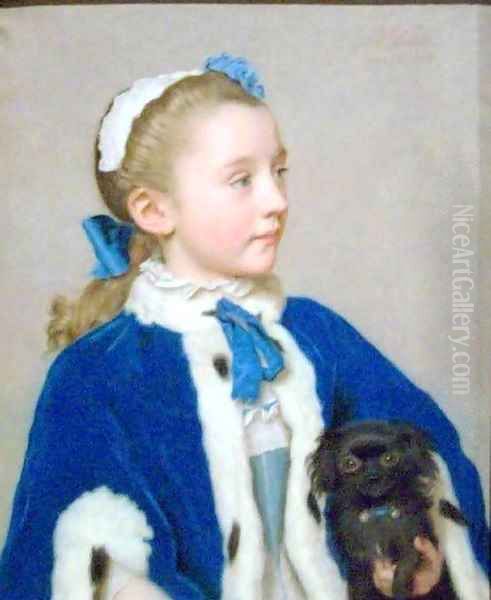
His pastel portraits of the young archduchesses, such as Marie Antoinette, the future Queen of France, are among his most charming works from this period. Rendered with delicate realism and psychological insight, they convey both the status and the individuality of the young sitters. His success in Vienna solidified his international reputation. The meticulous detail and lifelike quality of his Viennese portraits were highly praised, contrasting with the more flamboyant Rococo styles then popular in France under artists like François Boucher. His time in Vienna was a period of significant professional triumph.
Success in Paris and London
Armed with imperial endorsements and his unique "Turkish" persona (though he sometimes modified his appearance depending on the location), Liotard travelled onwards. He arrived in Paris in 1748, where he exhibited at the Académie de Saint-Luc in 1751 and 1752. He painted portraits of prominent figures, including members of the French royal family, such as the daughters of Louis XV, including Princess Marie Adélaïde. While in Paris, he encountered the dominant forces of French art, including the aforementioned Boucher and the celebrated pastel portraitist Maurice Quentin de La Tour. Liotard's style, however, remained distinct – less overtly flattering and more focused on unvarnished truth than much contemporary French portraiture.
In 1753, Liotard travelled to London, where he stayed for two years. England was experiencing a golden age of portraiture, dominated by artists like Sir Joshua Reynolds and Thomas Gainsborough. Liotard found favour here as well, securing commissions from the British royal family, including Augusta, Princess of Wales, and her children, including the future King George III. His meticulous technique and the novelty of his background appealed to British patrons. It was during a subsequent visit to Holland in 1755-1756 that he created one of his most famous works, The Chocolate Girl (La Belle Chocolatière), likely depicting a Viennese maidservant, which was acquired by the collector Count Francesco Algarotti for Augustus III of Poland, Elector of Saxony.
The Master of Pastel
While Liotard worked competently in oil, enamel, and miniature painting, his true mastery lay in the medium of pastel. In the 18th century, pastel painting reached a peak of popularity, valued for its luminous colours and velvety texture, which were particularly suited to rendering fabrics and flesh tones. Artists like the Venetian Rosalba Carriera had pioneered its use for sophisticated portraiture earlier in the century, and Maurice Quentin de La Tour brought it to dazzling heights in France.
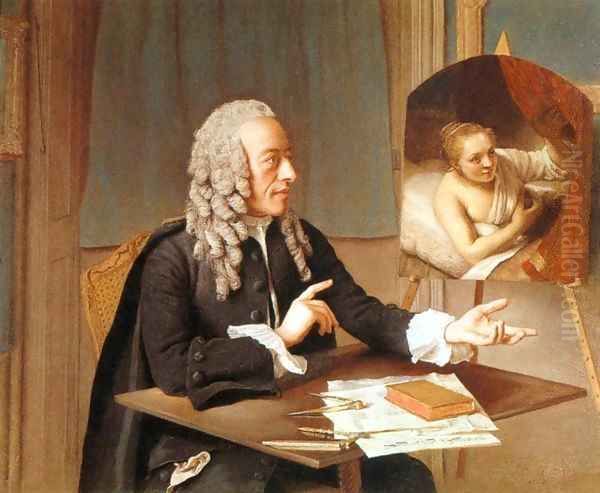
Liotard developed a highly refined pastel technique. He often worked on vellum or paper stretched over canvas, allowing for a smooth surface. His application of the pastel was exceptionally fine, often rubbed and blended to achieve subtle gradations of tone and an almost enamel-like finish, minimizing the powdery strokes visible in the work of some other pastelists. This meticulous approach contributed to the startling realism of his portraits. He paid extraordinary attention to detail, capturing the precise texture of silk, lace, fur, and velvet, as well as the subtle play of light on surfaces. His rendering of skin tones was particularly admired for its lifelike quality.
Realism and Unflinching Honesty
A defining characteristic of Liotard's art was his commitment to realism, often bordering on unvarnished honesty. In an era when portraitists were often expected to flatter their sitters, smoothing away imperfections and idealizing features according to Rococo conventions, Liotard generally preferred truth. He famously declared, "Paint what you see," a principle he largely adhered to throughout his career. This did not mean his portraits lacked psychological depth; on the contrary, his precise observation often resulted in remarkably insightful character studies.
His refusal to idealize sometimes caused friction. Some potential sitters were reportedly put off by his reputation for unflattering likenesses. However, many others valued his directness and the sense of authenticity his portraits conveyed. This commitment to truth is evident not only in the details of physiognomy but also in the meticulous rendering of clothing and accessories, which provide valuable documentation of eighteenth-century fashion. His approach can be seen as aligning with certain Enlightenment ideals emphasizing empirical observation and rational representation, standing in contrast to the more artificial graces of the high Rococo style championed by artists like Jean-Honoré Fragonard.
Turquerie and the Representation of the Other
Liotard's engagement with Ottoman culture places him as a key figure in the eighteenth-century phenomenon of Turquerie. This European fascination with Turkish and broader Ottoman styles influenced fashion, decorative arts, music, and painting. Unlike many artists who depicted imagined or stereotypical "Oriental" scenes without ever leaving Europe, Liotard's Turquerie was grounded in direct, prolonged experience. His depictions of Turkish figures and Europeans in Turkish dress possess an authenticity often lacking in the work of his contemporaries.
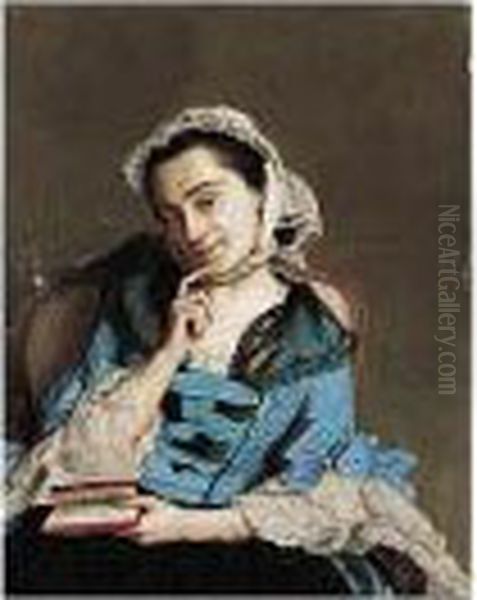
His self-portraits in Turkish attire are complex statements about identity, performance, and cultural exchange. By adopting this persona, Liotard positioned himself as an intermediary, a figure who had crossed cultural boundaries. His works contributed to shaping European perceptions of the Ottoman world, presenting it not just as exotic but as a place of observable customs and distinct individuals. While later artists like Jean-Auguste-Dominique Ingres and Eugène Delacroix would develop Orientalism further in the 19th century, Liotard's work represents an important early phase, marked by firsthand observation rather than purely romantic fantasy. His detailed drawings of costumes and daily life in Constantinople are invaluable historical documents.
Beyond Portraiture: Genre, Still Life, and Writing
While primarily known for his portraits, Liotard also produced notable works in other genres. The Lavergne Family Breakfast (1754), depicting his wife, Marie Fargues (whom he married in Holland in 1756), and their eldest son, is a charming intimate scene. It showcases his skill in rendering domestic interiors and still life elements, such as the porcelain tea set, with the same meticulous care he devoted to portraits. The Chocolate Girl can also be considered a genre piece, elevating a depiction of everyday service into a work of high art through its exquisite execution.
Liotard was also a skilled still life painter, though fewer examples survive. Works like Still Life: Tea Set (c. 1781-1783) demonstrate his ability to capture the varied textures and reflective surfaces of porcelain, silver, and wood with remarkable fidelity. Furthermore, Liotard was an intellectual artist, an art collector, and a writer. In 1781, he published his Traité des principes et des règles de la peinture (Treatise on the Principles and Rules of Painting). In this text, he articulated his artistic philosophy, emphasizing the importance of drawing, the study of nature, and the pursuit of truthfulness in representation, while critiquing affectation and mannerism.
Later Years and Artistic Quirks
In 1757, Liotard returned to his native Geneva, where he would spend most of the remainder of his life, although he continued to travel, including further visits to Paris, Vienna, and London (1772-1774). Around the time of his marriage in 1756, he finally shaved his famous beard and largely abandoned his Turkish attire, adopting a more conventional European appearance. He continued to paint portraits of Genevan society and visiting dignitaries.

His later work sometimes reveals a playful, even eccentric side. He experimented with trompe l'oeil (deceive the eye) effects, creating paintings that mimicked wood grain or depicted seemingly three-dimensional objects attached to a surface. A series of late self-portraits show him laughing or gesturing directly at the viewer, breaking the conventional decorum of portraiture with a surprising degree of informality and humour. These works suggest an artist still exploring the possibilities of representation and engaging with the viewer in unconventional ways even in his advanced years. He remained active as an artist until his death in Geneva on June 12, 1789, just weeks before the storming of the Bastille ushered in a new era in European history.
Legacy and Reputation
During his lifetime, Jean-Étienne Liotard enjoyed considerable international fame and patronage from the highest levels of European society. His technical brilliance, particularly in pastel, was widely acknowledged, and his "Turkish" persona made him a memorable figure. However, after his death, his reputation somewhat declined, particularly outside Switzerland. The rise of Neoclassicism, with its emphasis on Greco-Roman ideals and grand historical themes championed by artists like Jacques-Louis David, shifted artistic tastes away from the intimate realism of Liotard's portraiture.
For much of the 19th and early 20th centuries, Liotard was often remembered primarily for a few famous works like The Chocolate Girl or as an eccentric figure known for his beard and turban. However, renewed scholarly interest and major exhibitions in recent decades, including significant shows at institutions like the Frick Collection in New York, the National Gallery in London, and the Rijksmuseum in Amsterdam (which holds a major collection of his works), have led to a significant reassessment of his achievements.
Today, Liotard is recognized as a major figure of the Enlightenment era, an artist whose work bridges the Rococo and Neoclassical periods. He is celebrated for his exceptional technical skill, his insightful and honest portraiture, his pioneering role in depicting the Ottoman world based on direct experience, and his unique position as a truly cosmopolitan artist who navigated diverse cultural landscapes. His major works are now housed in leading museums worldwide, including the Musée d'Art et d'Histoire in Geneva, the Rijksmuseum, the Louvre in Paris, the Uffizi Gallery in Florence, the Victoria and Albert Museum and the Royal Collection Trust in London, and the Gemäldegalerie Alte Meister in Dresden.
Conclusion: An Artist of Truth and Travel
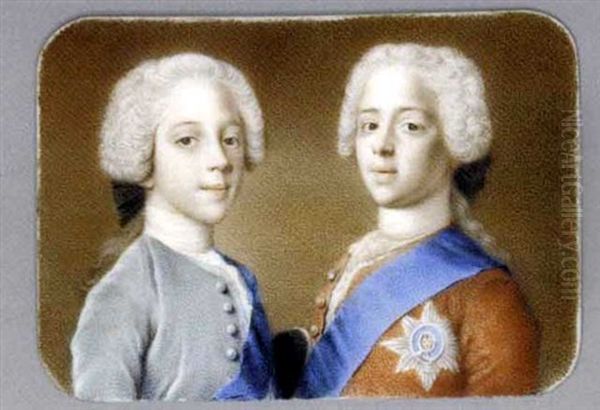
Jean-Étienne Liotard's art offers a fascinating window into the world of the 18th century. His portraits capture the likenesses of individuals from across the European social spectrum, from emperors and princesses to merchants and maidservants, rendered with a clarity and directness that feels remarkably modern. His mastery of pastel allowed him to achieve effects of startling realism, while his experiences in the Ottoman Empire provided him with a unique perspective and subject matter, making him a key figure in the history of Orientalism.
A tireless traveller, a meticulous craftsman, and an artist committed to truth above flattery, Liotard carved out a unique niche in the competitive art world of his time. His life and work reflect the intellectual curiosity and cultural exchanges of the Enlightenment. While perhaps not as revolutionary as some of his contemporaries, his dedication to precise observation and his cross-cultural experiences resulted in a body of work that remains compelling for its technical brilliance, historical significance, and enduring human insight. Jean-Étienne Liotard, the "Turkish Painter" from Geneva, stands as a testament to the power of seeing clearly and representing the world with honesty and skill.